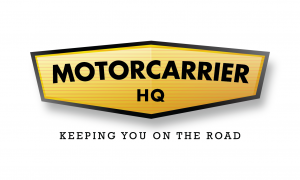May 23, 2023
Top 10 Tips For Owning a Successful Trucking Company

Running a trucking company takes a lot of responsibility. As you learn how to grow your business, this list highlights the top 10 ways you can do this successfully without cutting corners.
1 – Start with a business plan
When you start a business plan for your new company, research and collect information to support what makes the most sense for you and what you are trying to achieve. It’s wise to start with clear, identifiable goals such as how much money you want to make in the first five years or what you want your day-to-day to look like. These questions will help you minimize possible obstacles as you make a plan:
- What equipment do you need in your first year? The next five years? How will you pay for this?
- What makes the companies you have driven for successful?
- Do you want to hire drivers?
- What top qualities do you want in your drivers?
- Will you lease or buy the equipment?
- What will your invoicing system look like? Do you need certain software?
- What are your responsibilities as the owner? What responsibilities can you delegate to others?
- Where do you want to base your fleet?
- Do you need a financial expert to help you?
2 – Arrange your funding
You need enough money up front to fund your business. First, determine the minimum to start. Then, decide how to secure it. This could include a small business loan, an individual investor, or your own funds. Each option comes with advantages and disadvantages. For example, self-funding offers you the freedom to maintain control of your vision. Talking through your choices with a financial advisor, an accountant, or someone who has started a business can offer you personalized advice for your business. You can also check out our Start Up Costs Calculator to get a rough idea on how much it will cost upfront to start your own trucking company.
3 – Know what you need to buy
There a few key things to know about equipment when you’re first starting out:
-
Decide if you want to lease or buy.
If you’re undecided, check out this Haulin Assets episode that explores what to know about leasing a semi-truck.
-
Make sure your equipment meets the needs of your cargo.
For example, if you transport perishable goods, you’ll need equipment that can keep the goods cold or frozen. Buying appropriately from the start will save you money in the long run.
-
Buy a solid rig from the start.
Whether it’s new or leased, pay attention to basic rig specs such as fuel economy and maintenance. Your truck is typically your most expensive purchase so be prudent about this financial commitment.
4 – Use social media to expand your business
One of the easiest ways to find drivers, shippers, and create partnerships is to create an online presence through a social media platform. LinkedIn is a top networking site that is easy to use and engage with other professionals in your industry. Even newer sites such as TikTok have a platform for drivers who show creativity about getting their brand out there. Whatever the platform, social media is an excellent way to maintain connections.
5 – Maintain good cash flow
There’s a difference between cash flow, what you make, and what you lose (profit and loss). Since this can be a cash-intensive business, you don’t have as much room to make mistakes with your finances. To get more tips on how to prepare and manage your cash flow, check out Haulin Assets Episode 85 where they share helpful information on the most common times cash flow may be tight:
- When you start
- As you grow
- When you stop factoring
- When freight rates decrease
- When fuel prices increase, but rates don’t
6 – Get feedback and improve
Ignoring feedback or failing to provide opportunities for partners to leave feedback creates a business blind spot. Whether you’re getting feedback from drivers, carriers, or your industry network contacts, it is important to learn how to respond with curiosity rather than defensiveness.
Validating others’ feelings and feedback increases the likelihood that they will speak up again when there’s an issue or when they have a suggestion about the work. You can also pay close attention to the feedback, positive and negative, on your competition’s social media pages or site and use this information to make adjustments to your own business.
7 – Follow the trends
Maintain an advantage over your competition and become a better owner-operator by staying on top of industry trends. Here’s how you can do this:
- Find and follow the social media accounts of industry experts
- Visit the Federal Motor Carrier Safety Administration (FMCSA) site to catch up on the latest content
- Do a weekly Google search of the top industry terms and read what’s hitting the news
- Check out the recent Haulin Assets podcast to discover past, present, and future trends with the freight market
8 – Don’t forget to manage the office
While you’re on the road, you need to make sure the other part of your business – the office side – keeps up. Here are some key questions to ask yourself:
- How do you want to invoice your customers? What software do you need for that?
- Who maintains your tech equipment or responds to tech issues?
- How much time do you need to spend finding loads each week? How will you keep records of this? This Haulin Assets post highlights how to keep clean records.
- Do you have a dedicated physical space set up for a home office?
- How many days a week do you need to do office work?
- Can you afford to hire a part-time office manager?
- Are your digital tools (such as Wifi) adequate for your office jobs?
If office management isn’t your strength, you can hire a truck dispatcher service to help with these tasks. To find the right company, we recommend asking your network for recommendations.
9 – Decide what type of loads to move
To successfully market your business, you want to decide what you carry and outline how you’ve outfitted your business to meet these trucking demands.
- The ‘less-than-truckload’ (LTL) segment means you’ll carry smaller loads of goods that don’t fully fill your trailer. This means you can carry more than one shipment (FedEx is a leader in this one). Online retail really fueled this market.
- The ‘full and partial truckloads’ segment means the cargo will fill your trailer. While this can include partial shipments, this is really for rigs that can haul 50,000 pounds. You’ll either be a ‘for-hire’ or ‘private’ fleet – for-hire means you’re just transporting the goods for others, while a private fleet is when a large company has their own trucks and hauls their own goods.
- The courier service and parcel industry is made up of light goods less than about 110 pounds (this is the bulk of what UPS carries).
10 – Hire drivers who want to stay
Should you choose to hire a driver instead of sitting behind the wheel yourself, you can save money right from the very beginning by hiring and retaining strong employees. When you thoroughly train and hire the best possible candidates at the start, you can retain great drivers and avoid spending additional money, time, and resources on hiring and training new employees. Keep your turnover low by offering your employees benefits and perks, such as:
- Competitive health insurance rates
- Employee bonuses for safe driving, longevity, or for signing on
- Holiday bonuses or gift cards
- Employee appreciation programs
- Matching retirement plans
- Annual recognition events
- Flexible home time
It’s hard to offer all these benefits when you are first trying to grow. A lot of companies start with one or two smaller benefits and will add additional benefits as they grow. When employees feel appreciated, they’re more likely to increase their productivity, performance and overall engagement – which means your turnover rate stays low. For a deeper dive, check out this Haulin Assets episode that explains why good drivers are the key to your success.


